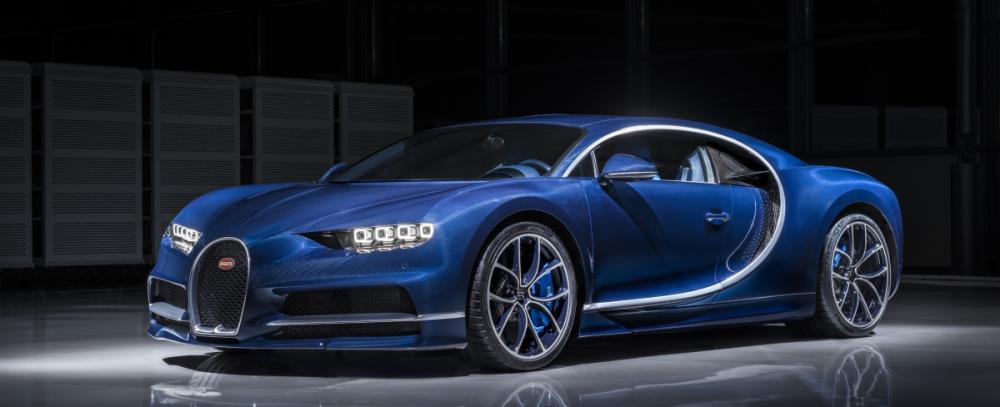
You might be wondering why we’re writing about a car that costs over £2,000,000. There’s also the significant stumbling block that only 500 Bugatti Chirons will be made. Let’s face it, it’s a pipe dream for the vast majority of us. We’re car enthusiasts, though, and we simply cannot ignore this astounding piece of human engineering and neither should you.
In a world where it’s becoming commonplace for supercars to be hybrids, it’s rare to see a full-blooded, fuel-guzzling variant. Bugatti wanted to continue cutting down weight from the Veyron, and this made it impossible to transform the engine system into a hybrid. This relentless pursuit of speed continues with the Chiron and transcends every part of the car.
Before we start talking about specifics, we think it’s important to help you understand just how ludicrously fast the Chiron really is. Previously, the Veyron was the world’s fastest road-legal production car and had around 1,200bhp as well as a top speed of 268mph. The Chiron has 1,500bhp and has to be limited to 261mph (for safety reasons, of course), but has an estimated top speed of 288mph.
You’ll notice that we said “estimated”. This is because the Chiron has not been able to reach its top speed in testing yet due to the tyres being unable to withstand the force being put through them at those speeds. Each gram of rubber on the tyres has to withstand centrifugal forces of around 3800g (that’s 3,800 times the force of gravity).
One of the main reasons behind this incredible power increase was Bugatti’s decision to redesign the majority of the engine. They reduced the weight significantly by increasing parts made from lightweight materials such as titanium and carbon fibre. Bugatti also upgraded the coolant pump, allowing 800 litres of water to pass through the engine every minute. Combine this with the fact that the new air cooling system pumps 60,000 litres of air through the engine every minute, the rate at which the engine is being cooled allows it to be pushed further than ever before.
The exhaust system has been dramatically improved as well. The Chiron features six catalytic converters. A normal car will have one, maybe two if it features a dual-exhaust system. Two of the Chiron’s converters, dubbed the main converters, are six times larger than those typically fitted to a medium sized car. This allows the Chiron to safely convert its carbon emissions more effectively than other vehicles.
With all this power, the brakes needed to be beefed up as well. Bugatti looked to Formula 1 in this regard and designed their brakes with this inspiration in mind. They decided to use Carbon Silicon Carbide for the brake discs, allowing them to be lighter as well as perform better than the Veyron’s brakes, especially at extremely high speeds.
We could sit here splurging about the Chiron all day. It’s become the fastest road-legal production car in history and has had to innovate in innumerable ways to improve upon its predecessor, the Veyron. By all accounts, though, it’s succeeded with flying colours. It’s a testament to human endeavour and engineering and even though there’s a very high chance we’ll never drive it, just knowing it’s out there is good enough for us.


